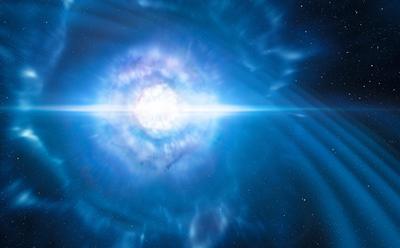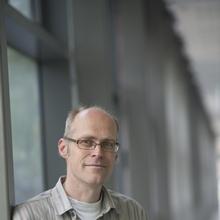New partnership to build gravitational wave detector in India

An agreement has been signed between India and the UK focusing on building capacity within India for a new LIGO gravitational wave detector – adding to two which are already operational in the USA. The project will open the way to closer working between scientists in India and their counterparts in UK universities, including the University of Southampton.
The LIGO India partnership is funded by the Science and Technology Facilities Council (STFC) through its Newton-Bhabha project on LIGO. Newton Bhabha is a fund aimed at bringing together the UK and Indian scientific research and innovation sectors.
The two existing LIGO detectors1, together with a detector in Italy (VIRGO), are already yielding fascinating, ground breaking results – confirming the existence of gravitational waves, with the observation of two merging black holes in 2015, and the first detection of two colliding neutron stars in 2017.
The University of Southampton will make contributions to training in the field of theory modelling and data analysis, as well as outreach activities and interaction with schools. Professor Nils Andersson of Mathematical Sciences at Southampton comments: “We are very happy to be part of this project, which builds on recent breakthrough gravitational-wave discoveries. There is enormous enthusiasm for this science across India, and we hope to contribute to making the wider LIGO India project a success by training young researchers and helping them develop the required precision technology.
“By working with schools across India we will bring the excitement of this new astronomy to the next generation of scientists. This adds a new dimension to our existing public engagement effort and promises to be very exciting indeed.”
The LIGO India agreement was officially signed at the British Council offices in New Delhi between a consortium of universities in India, led by the Inter-University Centre for Astronomy and Astrophysics (IUCAA) and a consortium of UK universities, led by the University of Glasgow. It will help upscale entrepreneurial activity, creating more business spin-offs by using applied gravitational wave research.
Professor Giles Hammond, the UK project lead, who works at the University of Glasgow, says: “The UK has a proven track record in delivering high-quality technology and outreach activities relating to gravitational wave science, including the delivery of key hardware for the LIGO mirror suspensions. A model of sharing knowledge via staff, postdoc and student exchanges to the UK, together with trips to Indian institutes, will strengthen and benefit the UK and Indian academic communities, providing high quality training of the next generation of scientists and engineers.”
Professor Somak Raychaudhury, Director of the IUCAA Pune, lead university in the programme in India, says: “With the siting of the third Advanced LIGO detector in India there is an essential need for critically skilled students, postdocs and early career researchers to be trained at the highest level in gravitational wave astronomy, for construction of the infrastructure/technology and data pipelines. In turn, the LIGO India project will help the Indian scientific/community to be a major player in the emerging research frontier of gravitational wave astronomy.”
This collaborative programme will also enable Indian scientists to work with UK institutes for extended periods of time, with reciprocal visits to the India labs to develop infrastructure and provide onsite training, essential to build the capability to deliver a LIGO-India detector.
The UK consortium of universities includes Glasgow, Birmingham, Cardiff, Sheffield, Southampton, Strathclyde and the University of the West of Scotland – all of whom have played a leading part in the international LIGO collaboration over decades.
Related Staff Member
Notes for editors
1) Each detector consists of two long tunnels arranged in an L shape, at the joint of which a laser beam is split in two. Light is sent down the length of each tunnel, then reflected back in the direction it came from by a suspended mirror. In the absence of gravitational waves, the laser light in each tunnel should return to the location where the beams were split at precisely the same time. If a gravitational wave passes through the observatory, it will alter each laser beam’s arrival time, creating an almost imperceptible change in the observatory’s output signal.
